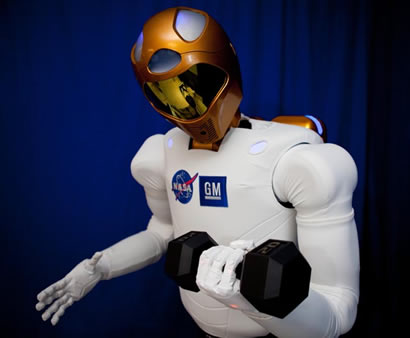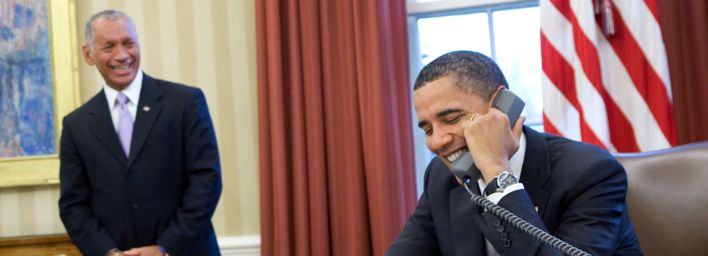Video: The Most Shuttled Spacecraft "Discovery" about to retire after it's ongoing Final Flight
A NASA Video : Discovery Retrospective |
Retirements are parts and partciple of life. Retirements make us remember the fact that nothing is permanent in this world - may be it is Dictator of a nation or a Space Shuttle.
NASA will be missing it's one of the most sincere and reliable workhorses soon. Space shuttle Discovery roared off the launch pad at NASA's Kennedy Space Center in Florida to begin its last mission to the International Space Station. The 39th flight of NASA’s most flown shuttle is scheduled to last 11 days (Now extended by NASA to 13 days),began it's journey on Thursday, Feb. 24.Space shuttle Discovery and the six-person STS-133 crew lifted off from NASA's Kennedy Space Center in Florida on Feb. 24, 2011, and reached the International Space Station Safely after one day.
Commander Steve Lindsey, Pilot Eric Boe and Mission Specialists Alvin Drew, Steve Bowen, Michael Barratt and Nicole Stott will deliver the Permanent Multipurpose Module, or PMM, to the station. The PMM was converted from the multi-purpose logistics module Leonardo and will provide additional storage for the station crew. Experiments in such fields as fluid physics, materials science, biology and biotechnology may be conducted inside the module.The STS-133 mission will feature two spacewalks to do maintenance work and install new components. Robonaut 2, or R2, will be the first human-like robot in space when it flies on shuttle Discovery inside the PMM to become a permanent resident of the station.
NASA's space shuttle fleet began setting records with its first launch on April 12, 1981 and continues to set high marks of achievement and endurance. Starting with Columbia and continuing with Challenger, Discovery, Atlantis and Endeavour, the spacecraft has carried people into orbit repeatedly, launched, recovered and repaired satellites, conducted cutting-edge research and built the largest structure in space, the International Space Station.
As humanity's first reusable spacecraft, the space shuttle pushed the bounds of discovery ever farther, requiring not only advanced technologies but the tremendous effort of a vast workforce. Thousands of civil servants and contractors throughout NASA's field centers and across the nation have demonstrated an unwavering commitment to mission success and the greater goal of space exploration.
Discovery was NASA's third space shuttle orbiter to join the fleet at Kennedy Space Center in Florida. Discovery also is known inside the space agency by its designation Orbiter Vehicle-103, or OV-103. Construction of Discovery began on Aug. 27, 1979 and was completed four years later. Discovery rolled out of the assembly plant building in Palmdale, Calif., October 1983 and was first launched Aug. 30, 1984.
When first flown, Discovery became the third operational orbiter, and it currently is the oldest orbiter in service. It was named after two historic, Earth-bound exploring ships of the past. One was a vessel used by Henry Hudson in the early 1600s to explore the Hudson Bay and search for a northwest passage from the Atlantic to the Pacific.
The other was one of two ships used by the British explorer James Cook in the 1770s. Cook's voyages in the South Pacific led to the discovery of the Hawaiian Islands. Another of his ships was the Endeavour, the namesake of NASA’s newest shuttle. Discovery has had many notable flights and was the Return to Flight shuttle following both the Challenger and Columbia accidents. Discovery will be the first space shuttle retired from NASA's fleet.
Destined for exploring the heavens instead of the seas, it was only fitting that NASA’s Discovery carried the Hubble Space Telescope into space during mission STS-31 in April 1990, and provided both the second and third Hubble servicing missions (STS-82 in February 1997 and STS-103 in December 1999). During its many successful trips to space, Discovery has carried satellites aloft, ferried modules and crew to the International Space Station, and provided the setting for countless scientific experiments.By the end of STS-133, 180 people will also have flown aboard Discovery, including the first female shuttle pilot and the first female shuttle commander (who happen to be the same person – Eileen Collins), the first African American spacewalker (Bernard Harris) and the first sitting member of congress to fly in space (Jake Garn).
It has travelled approximately 230 Million Kilometers during it's life (Means a little less than shuttling between Earth and Sun which is 150 Million Kms) .
Robonaut
 |
| More Info On Robonaut - > Click here |
Almost 200 people from 15 countries have visited the International Space Station, but so far the orbiting complex has only ever had human crew members – until now. But this time another great payload that Discovery is gifting to the ISS is it's permanent guest the Humanoid Robot Robonaut 2. It is the first humanoid robot in space, and although its primary job for now is teaching engineers how dexterous robots behave in space, the hope is that through upgrades and advancements, it could one day venture outside the station to help spacewalkers make repairs or additions to the station or perform scientific work.
Work on the first Robonaut began in 1997. The idea was to build a humanoid robot that could assist astronauts on tasks where another pair of hands would be helpful, or venture forth in their stead for jobs either too dangerous for crew members to risk or too mundane for them to spend time on. The result was R1, a human-like prototype of a robot that could perform maintenance tasks or be mounted on a set of wheels to explore the surface of the moon or Mars.
After that General Motors (GM) teamed up with NASA to further develop R1. In February 2010, R2 was unveiled – a faster, more dexterous, more technologically advanced dexterous humanoid robot that had ever been seen before. Its potential was quickly recognized and space was made on one of the few remaining shuttle missions to provide it a ride to the space station.

Obama wants Robonaut To Be Unpacked Soon
U.S. President Barack Obama made a really long-distance call on Thursday, telephoning the International Space Station to congratulate the crew of the shuttle Discovery on its final mission.During his call he was very quick to ask the astronauts if they had already put R2 to work “washing dishes” or other chores aboard the ISS, but was disappointed to learn they had not gotten around to taking him out of his packing foam yet.
“Come on guys, unpack the guy,” Obama joked. “He flew all that way and you aren’t unpacking him?” . Thats the focus Robonaut has now got...
Bye.. Bye...
The primary landing site for Discovery on STS-133 is Kennedy’s Shuttle Landing Facility. Alternate landing sites that could be used if needed because of weather conditions or systems failures are at Edwards Air Force Base, Calif., and White Sands Space Harbor, N.M.
And as it touches back the earth a long journey of 230 Million Kms will come to end and Discovery Will be a rememberance of the human desire to explore and discovery. It may become a Museum exhibit or something else but it still has volumes to speak about the journey it has done. The data it's voyages have collected are still being processed by scientists.
Before starting the write up I yelled that nothing is permanent - neither the earth , the sun .. but there is something that is really permanent - the human(rather any intelling being- aliens ) desire to explore and DISCOVER
Links
NASA S-133 Space Mission Home Page
